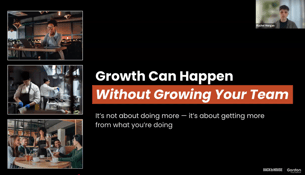With just a quick photo here or a well-placed video there, social media can train massive amounts of attention for your restaurant, and even drive traffic to it… but only if you know how to handle them.
We’ve scoured the internet and leveraged our relationships with restaurateurs and marketers to bring you this guide on getting the most out of an influencer partnership, without getting fleeced for free food and booze in the process.
Consider the approach
Before you can contemplate a partnership, you have to be in touch with an influencer. Who found who? Did they direct message (“DM”) you on Twitter out of the blue, or did one of your staffers recommend that you get in touch with a local Instagrammer she really likes? It’s not an automatic red flag if they come to you, but the law of supply and demand applies here just like it does anywhere else: if they’re coming to you, it’s because they need your partnership. Act accordingly.
Fools rush in
Think of this like any other business partnership. You wouldn’t ink a deal with a purveyor or landlord without feeling sure that they were straight shooters, right? So don’t do that with a social media influencer, either. Take time to evaluate their social media profiles: note the quality of their content, how often they post it, how often their followers engage with it. Pay attention to their level of professionalism: are they responding promptly and directly to your emails, or sending you typo-riddled DMs at weird hours?
If you can, meet them in person—simply by asking for face-to-face meetings, you’ll weed out some of the hacks who are just in it for the free meals.
Pick a yardstick that works for you—not them
Ask what sort of return-on-investment your potential partner can offer you. Have them give you examples of work they’ve done with other, similar restaurants, and ask them if they’re able to provide references. Ultimately, what you’re trying to figure out is a) can they deliver on what they claim; and more importantly, b) does what they can offer you move the needle for your business?
Some ways to measure their value to your restaurant include:
Number of social media impressions/followers, etc.
Opt-ins to email lists/loyalty programs, etc.
Takeaway assets (i.e., photos and videos you can repost later)
Walk-in traffic (via coupon code program)
Don’t be afraid to be explicit, and demand specificity from the influencer. What do they think is realistic in terms of quantity of content? What about platform engagements? What about in-person revenue opportunities? This is their business; if they can’t answer these questions directly, with real numbers, be wary about whether they’ll be able to execute for your business.
Put it in writing
Like any other business partnerships, you’ll want to create a document listing out expectations, compensation, deliverables, and remedies. A lot of restaurateurs we talk to feel weird about doing this: it seems like overkill for a couple Instagram posts here or there. But this functions as a gatekeeping tool more than anything, helping you winnow down the field to figure out which influencers treat their work as work, and which are just opportunists. Plus it keeps you covered in the case that something goes dramatically wrong (rare, but not unheard of.)
One deliverable we highly recommend, based on our research: a debrief or “post-mortem” memo recapping the campaign, including relevant metrics, anecdotal feedback, and handoff instructions for any assets generated. Influencers often claim they’re one-stop-shop agencies; any legitimate agency will provide this as a matter of course.
Money vs. meals
Any influencer worth working with is going to expect to get paid for their time. How will you compensate them? It’s best to decide what you’re willing to offer before entering a negotiation with a potential partner—not just how much, but also what form. Food & booze? Gift cards? Cold hard cash? Something else?
Keep in mind: Influencers with national or large regional audiences are almost always going to accept cash and only cash for their services. At a more local level, so-called “micro-influencers” may be willing to work in exchange for gift cards or comped meals.
Payment terms: half and half
There’s no reason to assume social media influencers are any more or less trustworthy than, say, your seafood guy. Which is to say: agree on payment terms that give you some leverage to make sure they get the whole job done to your satisfaction. We recommend a 50/50 split—half up front, and half upon completion of the agreed-upon campaign.
Measure success
The most important step in any partnership with a social media influencer comes at the end, when you take stock of how the campaign went. Did they hit the benchmarks they told you they would? What was your actual ROI? Did you receive feedback on the campaign from existing customers—or better yet, new customers?
Too many restaurant operators conclude their engagement with a social media influencer without any real reviewing of its overall value to their business. This is crucial: without objectively assessing what worked and what didn’t, you’re basically flying blind. Read the wrap-up letter you get from your partner. Ask questions about it. Write down notes on what you’d do differently.
What’d we miss?
Food “porn” has enormous currency amongst today’s diners (not to mention tomorrow’s!) Your would-be customers are often looking to social platforms first when deciding where they want to eat out.
These are our best tips for how to deal with the social media creators that make food porn around the internet; what are yours? Email us at tipjar@backofhouse.io with your tried-and-true methods for success.





